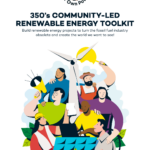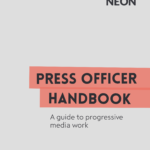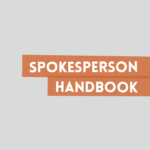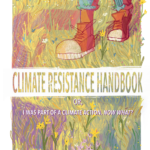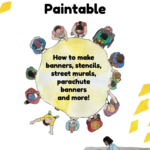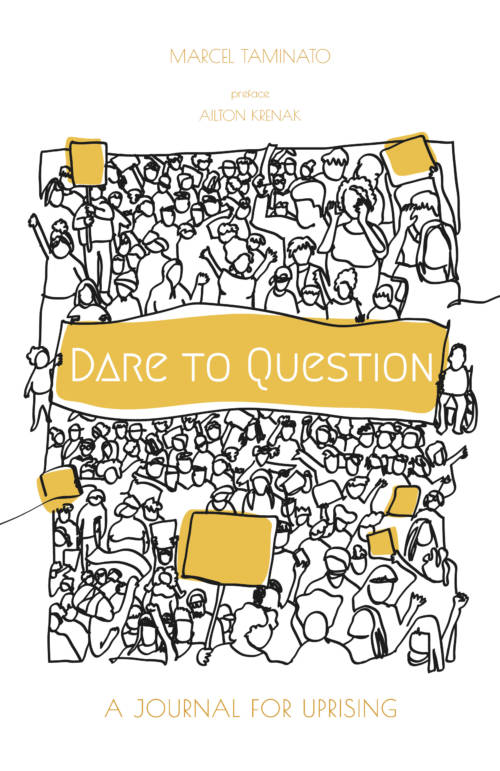Journalists don’t cover opinions (that’s for the Opinion section of the newspaper). They cover news — something that is new, preferably dramatic and surprising, and connected to current affairs or issues already being covered in the media. This is a challenge for us because the news is not built for covering on-going slow-burn problems well, like the warming of the planet. (Read more about Understanding Journalists and Framing Climate Change as News: Lessons From The Guardian.)
Here are some tips to help an action be more newsworthy:
Unusual alliances. One of journalism’s favorite narratives is the odd couple: people you wouldn’t expect or who normally don’t get along coming together. For example: political opponents, faith leaders and business leaders, veterans and student activists. Try teaming up with a local union, religious organization, athlete, or artist: any new alliance can make for a good story.
Example: Miners against coal: the pit where former Welsh miners are protesting alongside climate change activists https://www.newstatesman.com/politics/energy/2016/05/miners-against-coal-pit-where-former-welsh-miners-are-protesting-alongside
Pay attention to current events and link your news to them. Was your elected official recently in the news talking about climate change or clean energy technology? Was your community recently affected by increasing pollution, an oil spill, or a climate change related weather event? Is there an upcoming international climate change meeting? Take the opportunity to call up the media and relate your action to what they are already covering. (
Example: India should do with energy what it did with telecom https://www.livemint.com/Politics/jIgCFmmBfBr4OYwKLTuzoN/India-should-do-with-energy-what-it-did-with-telecom-Bill-M.html
Think visually. Climate change is a challenging issue to convey – it’s abstract to most people, and happening slower than your typical disaster. That’s why staging actions that help visualize climate change can be very powerful for the community, and the media.
Example from Lebanon: Seawater Level Caution Tapes Warn About Climate Change [the tape was at the potential level of the ocean due to sea level rise] https://www.indyact.org/ContentRecordDetails.aspx?id=86#sthash.amXnQRZo.dpuf
Use the right messenger. Having a good message is not enough; it is important to use the right messenger for your audience. A popular musician or athlete may be an influential messenger among young people. On the other hand, a decision maker or politician may be more receptive if technical specialists or community members deliver the message.
Example from South Africa and UK: African Catholic Groups Call on Pope Francis to Support Divestment From Fossil Fuels Movement https://ecowatch.com/2015/12/13/pope-francis-divest-fossil-fuels/ or Oxbridge academics call for ‘morally sound’ university investments https://www.theguardian.com/environment/2016/feb/02/oxbridge-academics-call-for-morally-sound-university-investments
Find a local messenger. If the goal is reaching an elected official, often they want to know what their voters think. That means community leaders, whether small business owners, moms, or teachers, can often have a huge impact. Everyday people dedicating themselves to action on climate can deliver a powerful message — and journalists, especially local newspapers, love reporting on local messengers.
Examples from Brazil: Diocese de Paranavaí pede apoio da Câmara para conter o fracking [Paranavaí Diocese asks Camera support to contain the fracking] https://www.diariodonoroeste.com.br/noticia/paranavai/local/81259-diocese-de-paranavai-pede-apoio-da-camara-para-conter-o-fracking or Momentum Continues to Grow in the Opposition to Fracking: More Than 70 Brazilian Cities Approve Fracking Bans https://www.commondreams.org/newswire/2016/08/29/momentum-continues-grow-opposition-fracking-more-70-brazilian-cities-approve
Make it the first, the largest, or the only. Media are often looking for what is fresh and new. You can boast about your action if it is the “first interfaith gathering in the area on global warming” or “the longest march in Cairo in a decade.” Though it is extremely important that you don’t make untrue claims since maintaining credibility is key (“perhaps the biggest” and “among the first” are useful phrases when you are not certain you can make this claim without a doubt).
Example: ‘Largest-ever’ climate-change march rolls through New York City https://www.usatoday.com/story/news/nation/2014/09/21/nyc-climate-change-march/16008009/
David vs. Goliath. Many cultures have stories of the hero who wins against all odds. You can tap into this through your action design, or also emphasizing how big our opponents are.
Examples: Pacific Islanders blockade Newcastle coal port to protest rising sea levels https://www.theguardian.com/environment/2014/oct/17/pacific-islanders-blockade-newcastle-coal-port-to-protest-rising-sea-levels
Action Logic. Action logic means that someone who doesn’t know anything about the issue can quickly understand why the action is being done. It doesn’t require a lot of background knowledge and it doesn’t even require people to immediately agree with you—in fact, what makes action logic so powerful is that it’s the most persuasive action (see Action Logic for more).
Example from Germany where activists shut-down one of the largest open-pit mines: Streit über Großdemonstration der Klimaschützer (Dispute over major demonstration of environmentalists) https://www.ardmediathek.de/tv/KLARTEXT/Streit-%C3%BCber-Gro%C3%9Fdemonstration-der-Klimas/rbb-Fernsehen/Video?bcastId=3913652&documentId=35434422
Photos – they say 1,000 words. The visual for your event is often as important as your spokespeople. An action photo is key and a strategic tool for leveraging your event in media and the community after the fact (see Taking Quality Photographs for more). Here are just a few tips on getting it right:
- Plan it: Use your message and goals when coming up with the image you want people to remember. Make sure you plan out photos before the event, and think out what props or signs will help tell your story and how to convey the size of the crowd.
- Designate a photographer: it could be a professional, a volunteer, a friend – whoever you can find who is reliable and can take a good photo.
- Put it on the agenda: make some time in your event schedule to get everyone together to take a photo. Nothing’s worse than realizing everyone’s gone home before you can take a photo to remember it.
Example: Photo Essay from the climate march during COP20 https://350.org/photos-largest-climate-march-in-the-history-of-latin-america/ or Break Free Photo essay https://www.theguardian.com/global-development-professionals-network/gallery/2016/may/21/breakfree-fossil-fuel-protest-young-people-around-the-world-in-pictures
